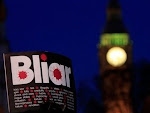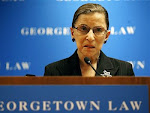 A trillion dollars doesn’t buy what it used to-at least when it comes to global warming, according to a new analysis from the Environmental Protection Agency.Last July, this column reported that the latest global warming bill-the Low Carbon Economy Act of 2007, introduced by Sens. Jeff Bingaman, D-N.M. and Arlen Specter, R-Pa.-would cost taxpayers more than $1 trillion in its first 10 years and untold trillions of dollars in subsequent decades.This week, the EPA sent its analysis of the bill’s impact on climate to Bingaman and Specter. Now we can see what we’d get for our money, and we may as well just build a giant bonfire with the cash and enjoy toasting marshmallows over it.For reference purposes, the current level of carbon dioxide in the atmosphere is about 380 parts per million. The EPA estimates that if no action is taken to curb CO2 emissions, the atmospheric concentration of CO2 would be 718 ppm by 2095.If the Bingaman-Specter bill were implemented, however, the EPA estimates that CO2 levels would be 695 ppm-a whopping reduction of 23 ppm.The EPA also estimated that if all countries- including China, India, Brazil and other developing nations-curb CO2 emissions, the atmospheric concentration of CO2 would be 491 ppm in 2095, including the above-mentioned 23 ppm reduction from the implementation of the Bingaman-Specter bill.So it appears that no matter how you slice it, Bingaman-Specter is worth a 23 ppm-reduction in atmospheric CO2 by 2095. But what are the climatic implications of this reduction in terms of global temperature? After all, we are talking about global warming.Although the EPA didn’t pursue its analysis that far, figuring out the implications are readily doable using the assumptions and formulas of the United Nations’ Intergovernmental Panel on Climate Change. Under the no-action scenario (718-to-695 ppm), the IPCC formulas indicate that the multitrillion-dollar Bingaman-Specter bill might reduce average global temperature by 0.13 degrees Celsius.Under the maximum regulation scenario (514-to-491 ppm), Bingaman-Specter might reduce average global temperature by 0.18 degrees Celsius. Actual temperature reductions are likely to be less since these estimates rely on the IPCC’s alarmist-friendly assumptions and formulas. The question, then, becomes this: Is it really worth trillions of taxpayer dollars over 90 years to perhaps reduce global temperatures by 0.13-0.18 degrees Celsius? If you can’t answer that question, consider this.Under the no-action scenario, average global temperature might be 1.2 degrees Celsius higher in 2095 than it is today, once again using conservative IPCC assumptions and formulas. Under the maximum-regulation scenario, average global temperature might be 1.03 degrees Celsius higher than today. (For reference purposes, the estimated total increase in average global temperature for the 20th century was about 0.50 degrees Celsius.)So what’s the difference in mean global temperature between the no-action scenario and the maximum-regulation scenario? Could it be a whopping 0.17 degrees Centigrade? Is that what global warming hysteria is all about?
A trillion dollars doesn’t buy what it used to-at least when it comes to global warming, according to a new analysis from the Environmental Protection Agency.Last July, this column reported that the latest global warming bill-the Low Carbon Economy Act of 2007, introduced by Sens. Jeff Bingaman, D-N.M. and Arlen Specter, R-Pa.-would cost taxpayers more than $1 trillion in its first 10 years and untold trillions of dollars in subsequent decades.This week, the EPA sent its analysis of the bill’s impact on climate to Bingaman and Specter. Now we can see what we’d get for our money, and we may as well just build a giant bonfire with the cash and enjoy toasting marshmallows over it.For reference purposes, the current level of carbon dioxide in the atmosphere is about 380 parts per million. The EPA estimates that if no action is taken to curb CO2 emissions, the atmospheric concentration of CO2 would be 718 ppm by 2095.If the Bingaman-Specter bill were implemented, however, the EPA estimates that CO2 levels would be 695 ppm-a whopping reduction of 23 ppm.The EPA also estimated that if all countries- including China, India, Brazil and other developing nations-curb CO2 emissions, the atmospheric concentration of CO2 would be 491 ppm in 2095, including the above-mentioned 23 ppm reduction from the implementation of the Bingaman-Specter bill.So it appears that no matter how you slice it, Bingaman-Specter is worth a 23 ppm-reduction in atmospheric CO2 by 2095. But what are the climatic implications of this reduction in terms of global temperature? After all, we are talking about global warming.Although the EPA didn’t pursue its analysis that far, figuring out the implications are readily doable using the assumptions and formulas of the United Nations’ Intergovernmental Panel on Climate Change. Under the no-action scenario (718-to-695 ppm), the IPCC formulas indicate that the multitrillion-dollar Bingaman-Specter bill might reduce average global temperature by 0.13 degrees Celsius.Under the maximum regulation scenario (514-to-491 ppm), Bingaman-Specter might reduce average global temperature by 0.18 degrees Celsius. Actual temperature reductions are likely to be less since these estimates rely on the IPCC’s alarmist-friendly assumptions and formulas. The question, then, becomes this: Is it really worth trillions of taxpayer dollars over 90 years to perhaps reduce global temperatures by 0.13-0.18 degrees Celsius? If you can’t answer that question, consider this.Under the no-action scenario, average global temperature might be 1.2 degrees Celsius higher in 2095 than it is today, once again using conservative IPCC assumptions and formulas. Under the maximum-regulation scenario, average global temperature might be 1.03 degrees Celsius higher than today. (For reference purposes, the estimated total increase in average global temperature for the 20th century was about 0.50 degrees Celsius.)So what’s the difference in mean global temperature between the no-action scenario and the maximum-regulation scenario? Could it be a whopping 0.17 degrees Centigrade? Is that what global warming hysteria is all about?To read more go to:
As in the days of Noah....






















































































.bmp)

























.bmp)